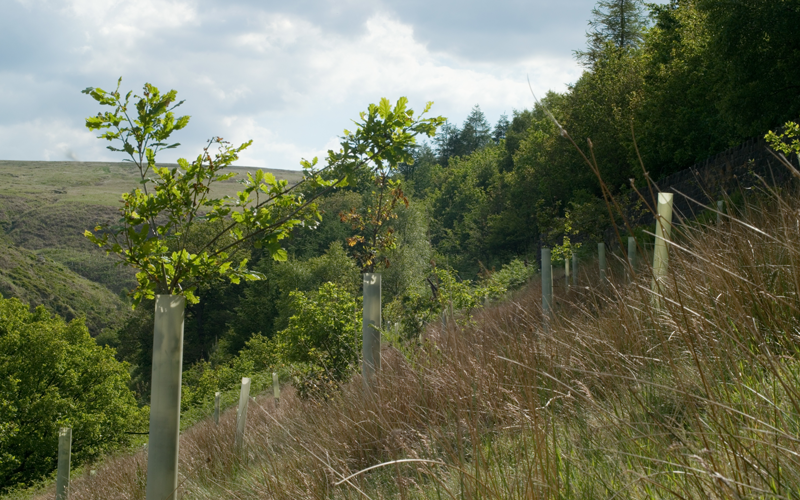
Forest Plastics Working Group
The Forest Plastics Working Group (FPWG) was established to reduce single use and temporary use plastics in tree and woodland establishment. As well as facilitating good practice concerning plastic, it aims to research and share information on plastic packaging and tree tube alternatives.
Of particular interest to the landscape industry, is the resource hub attached to the website, which shares best practice documents and peer-reviewed research papers. The FPWG is in the process of documenting the success of alternative tree shelters and guards to help industry members identify the most suitable type for their project.
A recent research paper highlighted by the group, The environmental performance of protecting seedlings with plastic tree shelters for afforestation in temperate oceanic regions: A UK case study, compared the environmental impact of planting trees with and without shelters, also looking at the different types of shelter available.
As stated by one of the co-authors, Professor Mark Miodownik:
"We have an established practice of using tree guards and we couldn’t find any real evidence where anyone had carefully calculated the impacts of either scenario. Now we’ve done it, and what we showed is that you can manage the land in a different way."
Researchers concluded that planting trees without shelters led to the smallest amount of carbon emitted and was overall the best option. When used, polypropylene shelters are preferable to most bio-based alternatives, including polylactic acid-starch blends and bio-polypropylene. This is because there are additional environmental impacts associated agricultural processes for producing biomass.
Lead author, Research Fellow Charnett Chau commented:
"Our study shows that if we only consider Climate Change (or carbon footprint), tree shelters do not have much environmental impact. This is because the amount of carbon sequestered by a tree over its lifetime (25 years) is significantly higher than the amount of carbon emitted due to the manufacturing of shelters and planting activities. However, if we consider a full range of environmental impacts, then planting trees without shelters is environmentally preferred.”
Further reading

